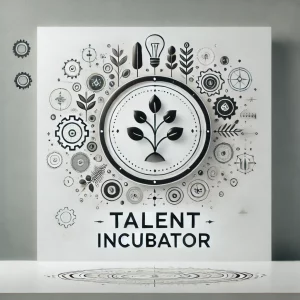 The tech industry is often hailed as the backbone of modern innovation, propelling society forward with groundbreaking advancements. Yet, behind the sleek interfaces and seamless user experiences lies a silent struggle that too many professionals face: mental health challenges. As the sector continues to grow at an unprecedented rate, it’s time we confront the elephant in the room, mental health in tech.
The tech industry is often hailed as the backbone of modern innovation, propelling society forward with groundbreaking advancements. Yet, behind the sleek interfaces and seamless user experiences lies a silent struggle that too many professionals face: mental health challenges. As the sector continues to grow at an unprecedented rate, it’s time we confront the elephant in the room, mental health in tech.
Why This Matters
The relentless pace of technological development brings immense pressure. Deadlines loom large, competition is fierce, and the demand for constant upskilling leaves little room for respite. This environment can lead to heightened stress, anxiety, and burnout among tech professionals. According to recent studies, burnout rates in the tech industry are significantly higher than in other sectors, underscoring a pressing need for change.
What’s the Hidden Cost?
Give some thought to how burnout affects not just individuals, but entire organisations? Beyond decreased productivity and increased turnover, unresolved mental health issues can stifle creativity and innovation, the very elements that drive the tech industry forward. Understanding this hidden cost is crucial for both employers and employees striving for sustainable success.
The Silent Struggle
One of the most significant pain points in the tech industry is the stigma surrounding mental health. Many professionals fear that admitting to mental health struggles could jeopardise their careers. This silence exacerbates the problem, creating a cycle where issues remain unaddressed and worsen over time. The fear of vulnerability in a competitive environment perpetuates isolation and despair.
Steps Towards Well-Being
- Foster an Open Dialogue Encourage a culture where discussing mental health is normalised. Leadership should model vulnerability, sharing their own experiences to break down barriers.
- Implement Flexible Work Policies Flexible hours and remote work options can significantly reduce stress. Allowing employees to balance work with personal life fosters a healthier mindset.
- Provide Access to Mental Health Resources Offer comprehensive mental health benefits, including counselling services and wellness programmes. Making these resources readily available signals that the organisation cares.
- Promote Regular Breaks and Downtime Encourage taking regular breaks throughout the day and respecting personal time outside of work hours. Downtime is essential for mental rejuvenation.
- Invest in Training and Development Equip managers with the skills to recognise and support employees experiencing mental health challenges. Proper training can make a significant difference in creating a supportive environment.
Building a Resilient Tech Community
Addressing mental health in the tech industry requires a collective effort. It’s not just about implementing policies but fostering a community where well-being is prioritised. Taking these practical steps will mean that organisations can create a sustainable work environment that nurtures both innovation and mental health.

 Cast your mind back and try to remember the first time you felt overwhelmed by the complexities of a new technology role, facing a problem you didn’t yet know how to solve. Now imagine having someone experienced, guiding you through, offering advice, and helping you see a way forward. That’s the power of mentorship.
Cast your mind back and try to remember the first time you felt overwhelmed by the complexities of a new technology role, facing a problem you didn’t yet know how to solve. Now imagine having someone experienced, guiding you through, offering advice, and helping you see a way forward. That’s the power of mentorship.

 Great leaders don’t just manage tasks, they inspire, guide, and nurture their teams to grow and succeed. Yet, many leaders still rely on a traditional management style focused on oversight and control. The true power of leadership lies not in managing but in mentoring. Imagine the transformative impact of shifting from being a manager to becoming a mentor, where both sides benefit by fostering talent, driving innovation, and creating an environment where people thrive together.
Great leaders don’t just manage tasks, they inspire, guide, and nurture their teams to grow and succeed. Yet, many leaders still rely on a traditional management style focused on oversight and control. The true power of leadership lies not in managing but in mentoring. Imagine the transformative impact of shifting from being a manager to becoming a mentor, where both sides benefit by fostering talent, driving innovation, and creating an environment where people thrive together. The seamless coordination of IT Service Management (ITSM) and the Project Management Office (PMO) has become a pivotal element in the success of business transformation initiatives. As organizations evolve, ensuring that IT and project teams work efficiently together can be the difference between smooth project execution and operational bottlenecks. But how do you ensure collaboration thrives, particularly when departmental conflicts and resource constraints emerge?
The seamless coordination of IT Service Management (ITSM) and the Project Management Office (PMO) has become a pivotal element in the success of business transformation initiatives. As organizations evolve, ensuring that IT and project teams work efficiently together can be the difference between smooth project execution and operational bottlenecks. But how do you ensure collaboration thrives, particularly when departmental conflicts and resource constraints emerge?


